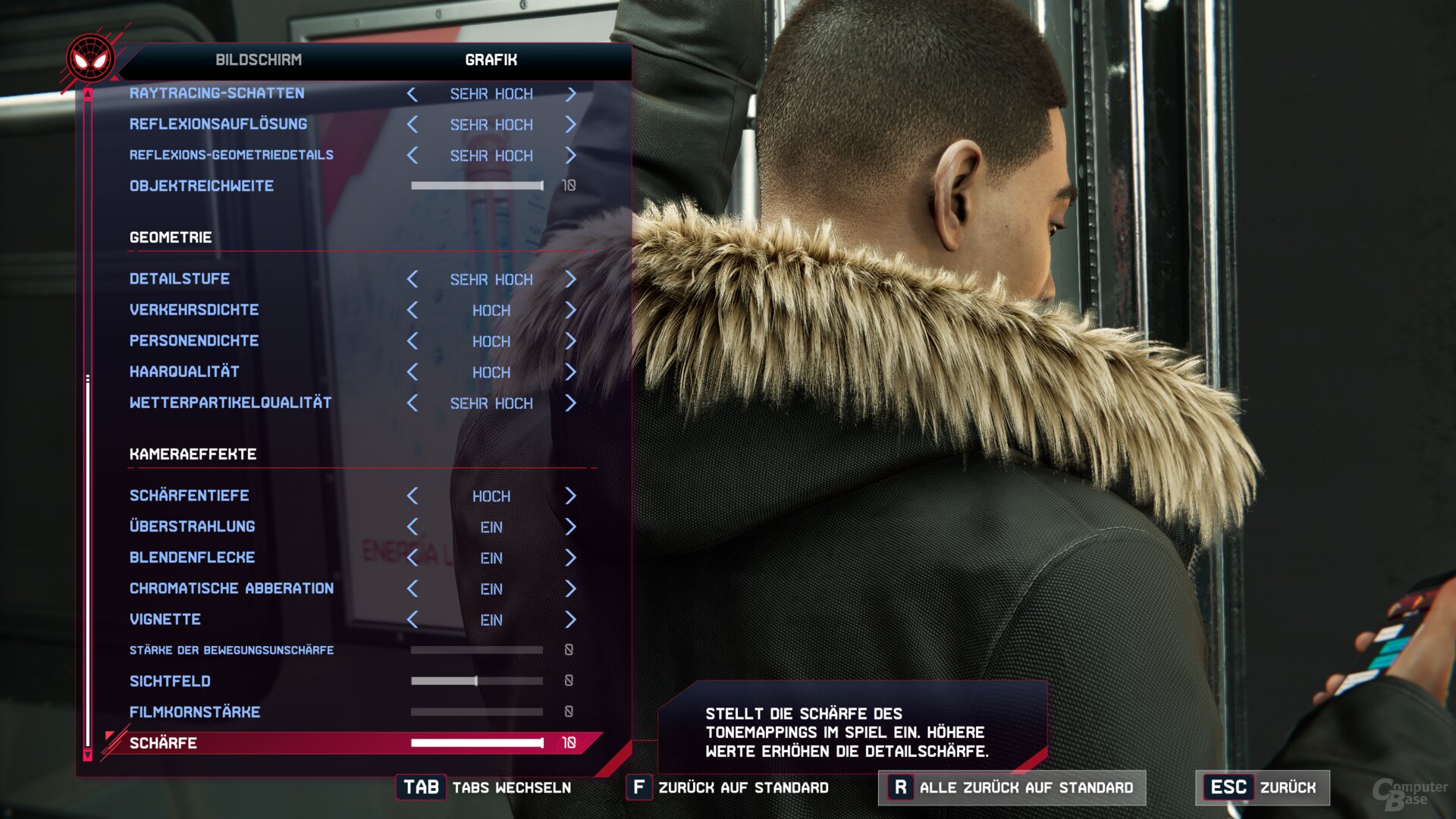Spider-Man: Miles Morales is coming to PC just a few months after Spider-Man Remastered. It convinces in the test with an even more impressive look, which, however, only eats up GPUs. Frame generation as part of DLSS 3 was not convincing on two systems in the editorial office.
Table of contents
- 1 Even more spectacular and GPU-guzzling than the original
- Spider-Man: Miles Morals (PC) in the technology test
- Overview of graphics menu and presets
- 2 Raytracing in detail
- The image quality of raytracing
- The performance of raytracing
- 3 Upsampling in detail< ol>
- AMD FSR 2.1 & Nvidia DLSS 2.4: image quality and performance
- Nvidia DLSS 3.0: Frame generation in analysis
- The test system and the benchmark scene
- Benchmarks in Full HD, WQHD and Ultra HD
- Benchmarks in Full HD, WQHD and Ultra HD with ray tracing
- The frame times are good without much streaming
- Stylish textures require more than 8 GB of VRAM
- < li>How good is Spider-Man: Miles Morales?
Spider-Man: Miles Morals (PC) in the technology test
Even though Spider-Man (test) was four years old when it was released on the PC in summer 2022, the remaster looked really chic. With the now quickly added Spider-Man: Miles Morales, which has been available on the PlayStation for two years, the developers of Insomniac Games and Studio Nixxes, which is again responsible for the PC implementation, are adding another portion to it.
As with Spider-Man Remastered, Nixxes has also implemented some technical features for the PC with Spider-Man: Miles Morales, some of which were already available for the consoles, but some were not. Ray tracing is on board again, but this time not only with reflections, but also for shadows. Upsampling also plays a role in the new part and the selection of available modes is large: AMD FSR 2.1, Intel XeSS, Nvidia DLSS 2.4 including the new version DLSS 3.0 and the manufacturer's own technology IGTI.
The game looks really good
No matter where you look: The game world of Miles Morales looks a little better than in Spider-Man Remastered. The same open world of New York is used, but it has been expanded, adapted and, above all, set in a wintry scenario. In combination with the unbelievably large number of details, the game world seems more alive than probably any other at the moment.
You can't tell by looking at Spider-Man: Miles Morales that this title is already two years old. The animations are absolutely top notch, the faces are very detailed and anyway the game world is. Particle effects abound in combat, and especially in the cutscenes, textures are incredibly sharp and detailed no matter how close the camera gets.
In short, the graphics of Spider-Man: Miles Morales are just plain fun and really bring the game to life. However, the engine is not without problems. The most striking thing is that the graphics often work with incredibly fine details, which even Nvidia's DLSS can no longer smooth out well.
Raytracing and upsampling play a big role
In general, upsampling has to struggle a lot more in the game than in the first edition, so high image stability can hardly be achieved in this way. In addition, the raytracing reflections are quite low-resolution in places. But that's all nagging at a very high level. Overall, there is probably no prettier game at the moment.
Overview of graphics menu and presets
The graphics menu of Spider-Man: Miles Morales is extensive, there are a lot of individual options and presets are also offered. In addition, there is a dynamic resolution that tries to keep an adjustable desired frame rate of 30, 45 or 60 FPS.
Gamers can also choose between AMD FSR 2.1, Intel XeSS, Nvidia DLSS 2.4 and DLSS 3.0, with DLSS 3.0 ultimately being DLSS 2.4 plus frame generation (details in test) and frame Generation can also be used without active DLSS 2 (“Super Resolution”). By the way, on Nvidia graphics cards you can turn Reflex on and off separately from all other options.
-
 Spider-Man Miles Morales Graphics Menu
Spider-Man Miles Morales Graphics Menu
Image 1 of 4



The graphics menu of Spider-Man Miles Morales
What is missing, however, is a simple FPS limiter, a possibility for downsampling and comparison screenshots or detailed descriptions of the options.
Game presets bring a bit more FPS, but there are viable alternatives
With “Very Low”, “Low”, “Medium”, “High” and “Very High”, Spider-Man: Miles Morales offers five different graphic presets, with “Very High” not yet representing the maximum. Both the anisotropic filtering and the shadows and the “Level of detail” option can be turned up even further. Ray tracing is switched off even with the very high preset, it always has to be activated manually.
Down to the medium setting, the game still offers decent graphics, although it is advisable to control the texture quality independently of the presets – it decreases rapidly with the presets.
At least if the graphics card is the limiting factor, it is not advisable to immediately to operate with the presets or individual graphic detail settings. The recommendation here is to try upsampling to increase performance first. Because the presets don't bring many FPS, upsampling usually does more. If, on the other hand, the processor is the limiting factor, only the graphics details help – or Nvidia's frame generation, although it is currently unlikely that someone will own a GeForce RTX 4090 (test) or RTX 4080 (test) but not a processor that is fast enough is to play Miles Morales without any problems.
Page 1/5 Next page
Raytracing in detail